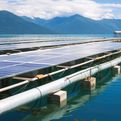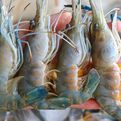Optimizing Aquafarming: The Interplay of Water Temperature and Dissolved Oxygen
Aquafarming stands as a linchpin in global food production, providing a sustainable means of cultivating aquatic organisms. Within this intricate ecosystem, the delicate interplay between water temperature and dissolved oxygen (DO) levels holds profound implications for the health and productivity of aquatic organisms. Unraveling this symbiotic relationship is pivotal for ensuring the success of aquafarming endeavors.
Water Temperature's Metabolic Influence
Water temperature stands as a master regulator, wielding influence over the metabolic machinery of aquatic organisms. As temperatures rise, metabolic rates escalate, ushering in a surge in oxygen demand. The correlation is direct: heightened metabolic activity corresponds to an increased need for oxygen. This demand-supply relationship plays a pivotal role in shaping the dissolved oxygen landscape within aquafarming systems.
- Temperature Dynamics
- A surge in water temperature fuels metabolic vigor among aquatic organisms, intensifying their reliance on oxygen.
- This surge, if unchecked, can herald a decline in dissolved oxygen levels, setting the stage for potential stress, diminished growth, and even fatalities among the aquatic denizens.
- Optimal Temperature Zones
- Striking a balance is paramount. Maintaining water temperatures within optimal zones is essential for sustaining the health and well-being of aquafarmed organisms.
- For instance, in fish farming, the preferred temperature hovers around 20-25°C. Deviations from this range can trigger adverse effects, manifesting as sluggish behavior in cooler waters or stress-induced oxygen regulation challenges in warmer conditions.
Dissolved Oxygen: The Breath of Life
Dissolved oxygen, a life-sustaining elixir for aquatic organisms, anchors the foundation of aquafarming success. Its levels directly impact respiration, metabolism, and overall organismal health. Adequate dissolved oxygen levels are imperative to avoid stress, foster growth, and enhance production.
- Species-Specific Demands
- The optimal dissolved oxygen levels are species-specific, with most fish requiring a minimum of 5mg/L.
- Some species may mandate even higher levels, reaching up to 8mg/L.
- Falling below these thresholds can usher in stress, compromising the resilience and vitality of aquatic organisms.
Interconnected Dynamics: Navigating Change
Understanding the intricate dance between water temperature and dissolved oxygen is pivotal. These parameters are not isolated; changes in one can cascade into repercussions for the other.
- A Temperature-Driven Cascade
- An alteration in water temperature sets forth a chain reaction. Increased temperatures elevate metabolic demands, heightening the need for oxygen.
- However, this heightened demand transpires concurrently with a decrease in oxygen solubility in warmer waters, potentially culminating in a dip in dissolved oxygen levels.
- Monitoring and Control
- Given the interconnected dynamics, vigilant monitoring and judicious control of both water temperature and dissolved oxygen levels become imperative.
- This ensures a harmonious equilibrium, fostering optimal conditions for growth, production, and the overall success of aquafarming endeavors.
Sustaining Aquatic Harmony
In conclusion, the nexus between water temperature and dissolved oxygen is pivotal in the realm of aquafarming. Navigating this symbiotic relationship with precision, understanding the nuances of temperature-driven metabolic shifts, and acknowledging the species-specific demands for dissolved oxygen all converge to define the path to sustainable and prosperous aquafarming.
Through meticulous monitoring and adaptive control measures, aquafarmers can cultivate an environment where water temperature and dissolved oxygen harmonize, nurturing thriving aquatic ecosystems.
Riley Sinclair (Digital Aqua Bear)
Hi! I'm Riley Sinclair (Digital Aqua Bear), and I'm exploring the world of digital aquaculture farms. Join me as I delve into innovative methods and sustainable practices for cultivating aquatic life in digital environments. Let's uncover the potential of digital aquaculture farms to revolutionize food production and environmental sustainability.
More From Digital Aqua Farm
Solar Energy in Shrimp Farming: Empowering Sustainability and Profitability
Riley Sinclair (Digital Aqua Bear)
Thai Shrimp Recipe: A Breathtaking Culinary Journey
Riley Sinclair (Digital Aqua Bear)
Becoming a Sustainable Shrimp Farmer: A Complete Guide
Riley Sinclair (Digital Aqua Bear)
Maximizing Shrimp Farming with Top IoT Systems: A Complete Review
Riley Sinclair (Digital Aqua Bear)
Challenges of Thai Shrimp Farming: Effective Strategies for Success
Riley Sinclair (Digital Aqua Bear)
Aquaculture Farming: Essential Terms and Definitions for Beginners (Part 3)
Riley Sinclair (Digital Aqua Bear)









